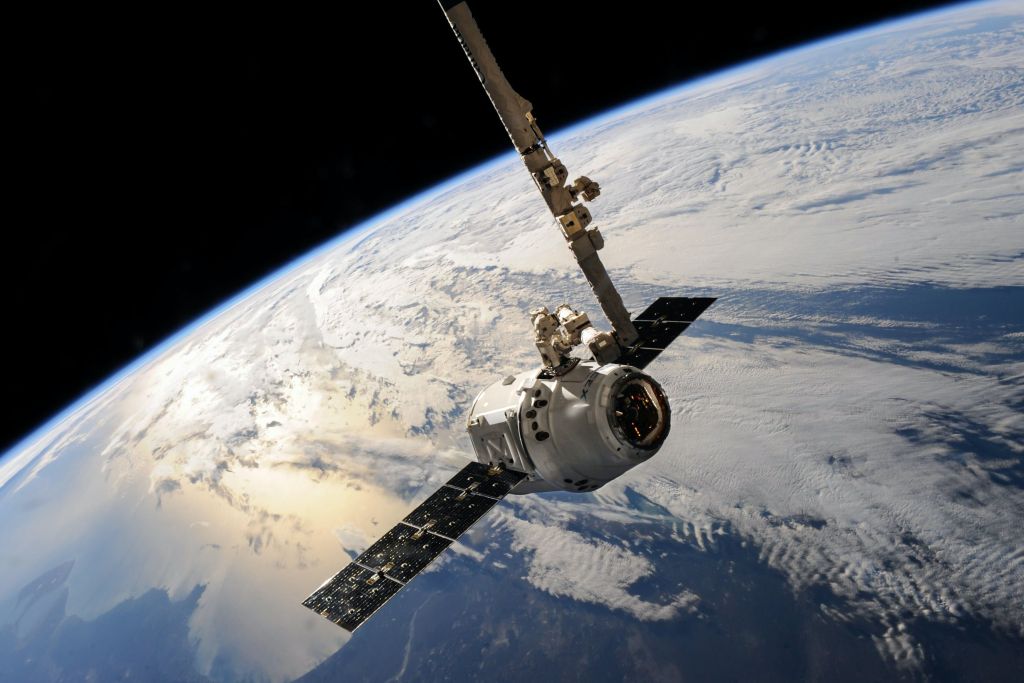Taking out the interstellar trash

In this article Christopher Range, a partner and patent attorney at European intellectual property (IP) firm Withers & Rogers and leader of its space sector group, discusses the development of innovations to tackle the increasingly difficult problem of space debris.
Growing interest in space travel and the commercialisation of space has led to increased demand for dynamic technologies to tackle the problem of man-made space debris. Among the key challenges facing innovators is the need to find ways of repairing, refuelling, deorbiting or disposing of satellites to prevent debris-related accidents occurring.
Space debris can comprise many different things – everything from spent satellites to smaller components or pieces of rockets or other equipment, which travel through space at an average speed of 10km per second.
This debris is a collision hazard, which could cause damage to existing satellites and spacecraft. The problem has been exacerbated by recent advances in commercial space exploration, driven by private sector investment and falling launch costs, which have led to the release of greatly more unwanted debris in the Earth’s upper atmosphere.
In 2019, SpaceX launched Starlink, the world’s largest constellation of satellites in low-Earth orbit, delivering high-speed broadband internet. Initially, almost 12,000 satellites are planned for deployment, but this could be extended to 42,000. It is estimated that by 2030, the global space economy could reach a value of US$1 trillion; with a projected 60,000 satellites active in near-earth orbit in the same year.

Space debris has attracted significant attention from the space industry. In 2022, The European Space Agency (ESA) set out its ambitious Zero Debris plan to eliminate space debris from Earth and Lunar orbits by the end of the decade. In addition, the ESA’s Zero Debris Charter has challenged the industry to find pioneering methods to dispose of inactive satellites. In the US, NASA is funding two research projects targeting commercial debris mitigation.
Private companies are also sharing in the responsibility to clean up space. For example, prior to rocket launches, space companies make plans to deorbit or dispose of satellites to mitigate the risk of equipment turning into debris. To achieve this, they may need to ensure on board propulsion systems function beyond the operational life of the satellite, so that the satellite may deorbit safely.
Greater collaboration in the global space industry will be vital to solve the problem of space debris. By sharing intelligence, such as the whereabouts of satellites and mission trajectories, it is possible to improve traffic management and reduce the risk of collisions.
In orbit innovations
To date, much of the emerging technological innovation has focused on refuelling satellites and servicing propulsion units. MacDonald, Dettwiler and Associates (MDA) owns a patent in the US for a dedicated refuelling satellite featuring a robotic arm. Tools can be fixed to the arm’s end effector, to open and close a fuel valve. It is then possible to attach a fluid line to a fluid valve whilst the satellite is in service. This refuelling satellite can be launched from Earth or from a spacecraft or space station and it can also be operated remotely.
Astroscale, a Japanese company specialising in orbital debris removal, owns an international patent application for a docking structure that attaches to a satellite using a magnetic plate. The structure allows out-of-service satellites to be captured by another spacecraft for repair work or refuelling whilst in orbit. The use of a magnetic plate reduces the need for adhesives to secure the plate to the housing and limits the impact of extreme thermal cycles on the structure’s components.

A further innovation in this area is an international patent application owned by Orbit Fab, which describes systems and methods for transferring materials between two space vehicles. In one method, fuel and other materials such as water, coolant and waste, are transferred through a coupling mechanism attached to a representative system. In another method, a service valve is connected to a coupling portion. The innovation is specifically designed for refuelling satellites and other spacecraft that have been launched into orbit with a limited amount of fuel on board.
Another space debris advance has been developed by Airbus. It has patented a magnetic damping device, known as the Detumbler, that attaches to a satellite. If the satellite begins a tumbling motion in orbit, a central motor inside the device moves too, inducing loops of electrical current (eddy currents) that help to control the satellite’s movement. This technology could also help to remove dead satellites from space, as it is easier to capture moving equipment.
Attracting investment
These technologies demonstrate the feasibility of both satellite disposal and refuelling technologies, which involve integrating new docking and fuelling mechanisms with existing spacecraft fixings. However, incompatibility is still a barrier. Fuel caps designed on satellites a decade ago will require matching propellant transfer systems to enable integration. This could make it more challenging to obtain patent protection, since innovators are not working in a commercial vacuum in this respect.
Due to the fast pace of technological innovation in this area, newcomers face intense competition, which again could make it more challenging to secure patent protection. It’s worth persevering however and seeking advice about where the best opportunities lie. Once granted, patents can be a useful tool for attracting the attention of investors and potential collaborators, leading to the real-world application of their invention.
<IP advice>
Withers & Rogers provides expert advice on the protection and enforcement of IP rights particularly for inventions, designs and trademarks. Its patent and trademark attorneys come with a depth of specialist understanding and pride themselves on helping businesses to commercialise their IP.
The company has four offices in the UK (London, Bristol, Warwick and Sheffield) and two further offices in Paris and Munich and its client portfolio stretches across the Americas, the Far East and Australia as well as mainland Europe.
Withers & Rogers has a large, technology-diverse client base ranging from major corporations and multi-nationals to small and medium-sized enterprises and universities.












